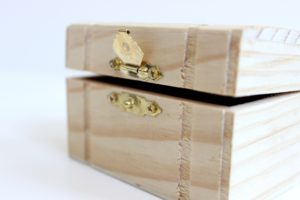
If you are a spouse who has been left in the dark when it comes to the finances, or if you have experienced financial abuse, it may be difficult to acquire the proper financial documents that list the assets you may be entitled to. If your spouse does not give you access to these documents or can’t seem to “find” them, you have a legal right to ask for these disclosed documents through the process of discovery.
The discovery process requires your spouse to disclose all financial documents that relate to your divorce case. In the event that your spouse may seem spiteful, you may have reason to suspect an act of dissipation, meaning that your assets may be intentionally being used illegally or for inequitable reasons by your spouse, who knows divorce is imminent.
Common areas in which a spouse may undervalue or disguise marital assets or income include:
- Antiques, artwork, hobby equipment, gun collections, and tools that are overlooked or undervalued. Often these can be hidden in safe deposit boxes or buried in boxes in attics or basements.
- Income that is unreported on tax returns and financial statements. This is especially true if the person receives frequent cash gifts or is paid in cash for services or goods sold.
- Cash kept in the form of travelers’ checks. You may be able to find these by tracing bank account deposits and withdrawals.
- A custodial account set up in the name of a child, using the child’s Social Security number.
- Investments in certificate “bearer” municipal bonds or Series EE Savings Bonds. These do not appear on account statements because they are not registered with the IRS. (Uncle Sam is phasing out these bonds, as they have been a money loser for the government.)
- Collusion with an employer to delay bonuses, stock options, or raises until a time when the asset or income would be considered separate property.
- Debt repayment to a friend for a phony debt.
- Offering phony loans to relatives or friends that are to be repaid after the divorce.
- Expenses paid for a girlfriend or boyfriend, such as gifts, travel, rent, or tuition for college or classes.
If the spouse has a business, the opportunity to hide assets and income can be magnified in the following possible ways:
- Skimming cash from the business.
- Using the business to pay for personal expenses to reduce their take home pay.
- Salary payments to a nonexistent employee, with checks that will be voided after the divorce.
- Money paid from the business to someone close — such as a father, mother, girlfriend, or boyfriend — for services that were never actually rendered (the money is given back to the deceitful spouse after the divorce is final).
- A delay in signing long-term business contracts until after the divorce. Although this may seem like smart planning, if the intent is to lower the value of the business and or income, it is considered hiding assets.
Three methods you can use to find hidden assets and income:
- Lifestyle Analysis
- Analyzing both parties’ income and expenses while evaluating spending habits, trends, and patterns to demonstrate the standard of living while married.
- Tax Return Analysis
- Investigating federal and state tax documents of both parties and analyze the financial complexity of the situation to ensure an equitable distribution of funds.
- Accounting Ledger Analysis
- Thorough examination of financial ledgers to precisely quantify the assets that both parties are eligible for, and uncover any unusual income or expense statements.
It is important to distinguish any hidden assets your spouse may be withholding from you during the process of divorce. Including all assets in the calculations will help with accuracy when it comes to the settlement process, ensuring that you and your spouse are obtaining a fair and equitable settlement. It is crucial to understand your rights when it comes to disputing and dividing assets in the divorce process, to ensure that each party receives what they are entitled to.
